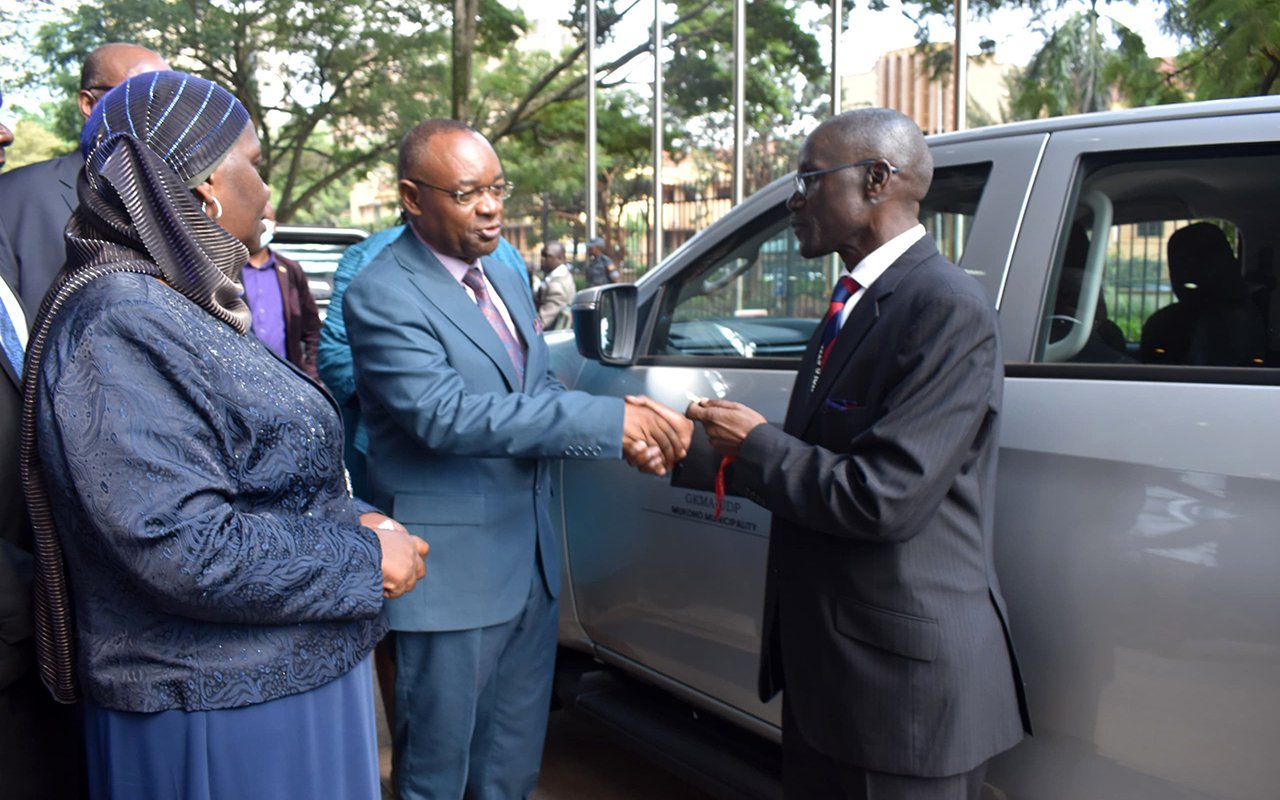NRM fails on pads, builds more classes

Speaking. The Minister of Education and Sports, Ms Janet Museveni, addresses a news conference at the Uganda Media Centre in Kampala yesterday. PHOTO BY MICHAEL KAKUMIRIZI
What you need to know:
- She also said Uganda Petroleum Institute Kigumba-UPIK, UTC Kichwamba, UTC Bushenyi, and Bukalasa Agricultural College were internationally twinned with other institutions and will become centres of excellence in oil and gas, construction, manufacturing, and agriculture.
- Under higher education, a total of 17 facilities were completed in 9 public universities. She said the ministry continues to construct Business incubation centres in public universities in Gulu, Makerere University Business School, Mbarara, and, Kyambogo universities.
KAMPALA. The Ministry of Education and Sports yesterday declared it has scored above average and was on course in meeting its performance targets set in the National Resistance Movement (NRM) party manifesto.
But a key component of the party president’s campaign promise ahead of the 2016 elections; sanitary pads for girls, especially in primary schools, has been left out.
When asked during her maiden press briefing at the Uganda Media Centre in Kampala yesterday whether the pledge will feature in the forthcoming budgetary allocations to the ministry, Ms Museveni said:
“We don’t have that funding within our ministry. I don’t think we shall do it right now; we have not lost hope, but we cannot do anything without funding.”
She also said government has no plan to feed children in schools. She urged parents to take up the responsibility to ensure food is packed for school children.
“I am hoping that my campaign shall bear fruit because government has not planned to feed children in schools. Parents must take full responsibilities and local governments must take it up and ensure parents pack lunch for their children,” Ms Museveni said.
She said absenteeism by teachers has been a big issue which she attributed to low levels of funding for inspection.
Achievements
Ms Museveni said under the revised Primary Teacher Education curriculum, teacher trainees had compulsory training in the first year, while in year two, they either specialised in ECD [early childhood development], or upper primary education.
The report says in primary schools, a total of 356 classrooms, 53 administration blocks, 108 five-stance VIP pit-latrines for boys and girls, 63 two-stance VIP pit-latrines for teachers, nine teachers’ houses and 63 water-harvesting tanks have been built in 54 selected primary schools.
“The ministry also procured a total of 318,131 copies for both P.4 Integrated Science and SST Pupils books; and 39,000 copies of Teachers Guides; monitored a total of 230 schools in 19 districts; monitored usage and accessibility and storage of instructional materials in 12 districts,” she reported.
Under secondary education, the minister said a total of 12 seed secondary schools are at different stages of construction. She also said the Lower Secondary curriculum was reviewed, with learners expected to select eight to nine subjects.
The Business, Technical, Vocational Education and Training (BTVET) sector perhaps received the biggest portion, with a number of technical institutes being constructed across the country.
Ms Museveni cited Bamuanaika, Kiruhura, Hoima School of Nursing, Arua School of Comprehensive Nursing, UTC Bushenyi, and UTC Kichwamba, are at different stages of construction.
Others already completed are UTC Kyema, Tororo and Ahmed Seguya, while Kibatsi, and, Kalongo are nearing completion.
Mrs Museveni said under the Directorate of Industrial Training, 22,610 candidates were assessed and certified in formal education, while another 14,619 under the non-formal sector were also assessed and certified.
She also said Uganda Petroleum Institute Kigumba-UPIK, UTC Kichwamba, UTC Bushenyi, and Bukalasa Agricultural College were internationally twinned with other institutions and will become centres of excellence in oil and gas, construction, manufacturing, and agriculture.
Under higher education, a total of 17 facilities were completed in 9 public universities. She said the ministry continues to construct Business incubation centres in public universities in Gulu, Makerere University Business School, Mbarara, and, Kyambogo universities.
Challenges
Low funding, lack of competent instructors for hands-on technical education to match international standards, low staffing levels in higher learning institutions, increasing number of students at University, which compromises quality and the rising unit cost per student per annum across public universities, were some of the challenges registered, according to Ms Museveni.




